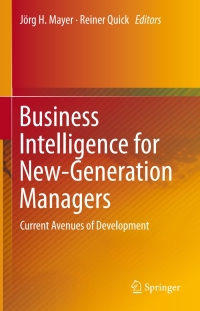Week 2 Discussion - JIT manufacturing Many companies have adopted the lean business model, whose goal is to eliminate waste while "satisfying the customer" and "providing a positive return" to the company. This had led companies to adopt practices such as total quality management (TQM) and just-in-time manufacturing (JIT). Briefly research the concept of JIT manufacturing and then answer the following questions by posting your answers in the discussion post. 1. Using the balance sheets included below, compute the ratio of inventory to total assets for Apple as of September 29, 2018, and for Samsung as of December 31, 2018. Express your answers as percentages, rounded to two decimal places. (For example, looking at Apple's balance sheet for the fiscal year ended 2017, the ratio would be computed as follows -> $4,855/$375,319 = .0129 so show as 1.29%) Apple Balance Sheet.pdf Samsung Balance Sheet.pdf 2. Based on your analysis, which company's (Apple's or Samsung's) inventory policy more closely follows a JIT system? 3. Share your smartphone preference - are you an Apple? Samsung? or Other user? Apple Inc. CONSOLIDATED BALANCE SHEETS (In millions, except number of shares which are reflected in thousands and par value) September 29, 2018 September 30, 2017 ASSETS; $ Current assets: Cash and cash equivalents Marketable securities Accounts receivable, net Inventories Vendor non-trade receivables Other current assets Total current scola 25,913 $ 40,368 23,186 3,956 25,809 12,087 131,339 20,289 53,892 17,874 4,855 17,799 13,936 128,845 Non-current sets: Marketable securities Property, plant and equipment net Other non-current assets Total non-current Assets Total 170,799 41,304 22,283 234 386 365.725 194,714 33,783 18,177 246,674 375, 319 $ LIABILITIES AND SHAREHOLDERS' EQUITY: $ Current is Accounts payabin Other current liabilities Deferred revenue Commercial paper Term det Total current labies 55.8885 32.687 7,543 11.064 44 242 30,551 7,548 11.977 6,406 100,814 8.784 116,860 Non-current labi Deferred revenue Term det Omer non-currenties Total non-currentes Total 2.797 93.735 45.180 141.712 258,578 2.830 97.207 40.415 140,458 241,272 Comments and contingencies Non-current assets: Marketable securities Property, plant and equipment, net Other non-current assets Total non-current assets Total assets 170,799 41,304 22,283 234,388 365,725 $ 194,714 33,783 18,177 246,674 376,319 LIABILITIES AND SHAREHOLDERS' EQUITY: $ $ Current liabilities: Accounts payable Other current liabilities Deferred revenue Commercial paper Term debt Total current inbilities 55,888 32,687 7,543 11,964 8,784 116,866 44,242 30,561 7,548 11,977 6,496 100,814 Non-current liabilities: Deferred revenue Term debt Other non-current liabilien Total non-current liabilities Total liabilities 2,797 93,735 45,180 141,712 258,578 2,836 97,207 40,415 140,458 241,272 Commitments and contingencies 40,201 Shareholders' equity Common stock and additional paid-in capital, 90.00001 par value: 12,600,000 shares authorized 4,754,986 and 5,126,201 shares issued and outstanding, respectively Retained earnings Accumulated other comprehensive Income (los) Total shareholders equity Total liabilities and shareholders' equity 70,400 (3.454) 107 147 365,725 35,867 98,330 (150) 134,047 375,319 $ $ See accompanying Notes to Consolidated Financial Statements Apple Inc. 2018 Form 10- K40 Samsung Electronics Co., Ltd. and its subsidiaries INTERIM CONSOLIDATED STATEMENTS OF FINANCIAL POSITION (In millions of Korean won, in thousands of US dollars (Note 2.4)) Notes March 31, 2019 KRW December 31, 2018 KRW March 31, 2019 USD December 31, 2018 USD 3,25 3,25 26,983,729 58,603,519 3,25 2.404,565 3,4,25 1.780.459 Assets Current assets Cash and cash equivalents Short-term financial instruments Short-term financial assets at amortized cost Short-term financial assets at fair value through profit or loss Trade receivables Non-trade receivables Advance payments Prepaid expenses Inventories Other current assets Total current assets 3,25 3,25 26,676,045 65,065,632 3,217,503 1,776,159 36,709 252 3,503,579 1.531,603 4,465,260 31455994 2,987497 177,388,524 30,340 505 65,893,797 2,703,693 2,001.948 33,867,733 3,080,733 1,361,807 4,136,167 28.984,704 2,326,337 174,697,424 23,724,693 57,866,980 2,861,529 1,579,650 32,647,858 3,115,954 1,362,151 3,971,238 27.975,804 2,656971 157,762,828 30,120,716 2,739,891 1,211,141 3,678,555 25.777.930 2,068,958 155,369,463 5 3,25 3.25 3,4,25 550.910 8.151.028 238,309 7.301,351 489,959 7,249,224 688,004 211.943 6,493 553 3,4,25 773,592 6 Non-current assets Financial assets at amortized cost Financial assets at fair value through other comprehensive income Financial assets at fair value through profit or loss Investments in associates and joint ventures Property, plant and equipment Intangible assets Long-term prepaid expenses Net defined benefit assets Deferred income tax asses Other non-current assets Total assets 7 8 7,315.948 116,392,356 14,868 032 4.541.220 372.940 5,448,794 9,264,539 345.467.883 775 427 7.313,206 115416,724 14,891,598 5,009,679 562.356 5.468002 7.683,168 339,357,244 6,506,535 103,515,080 13.223,081 4,038,794 331.679 4845.957 8.239.541 306 N90,682 689,636 6,504,096 102,647,389 13.244.039 4,455,424 500.139 4863040 6.833.128 301811,850 11










